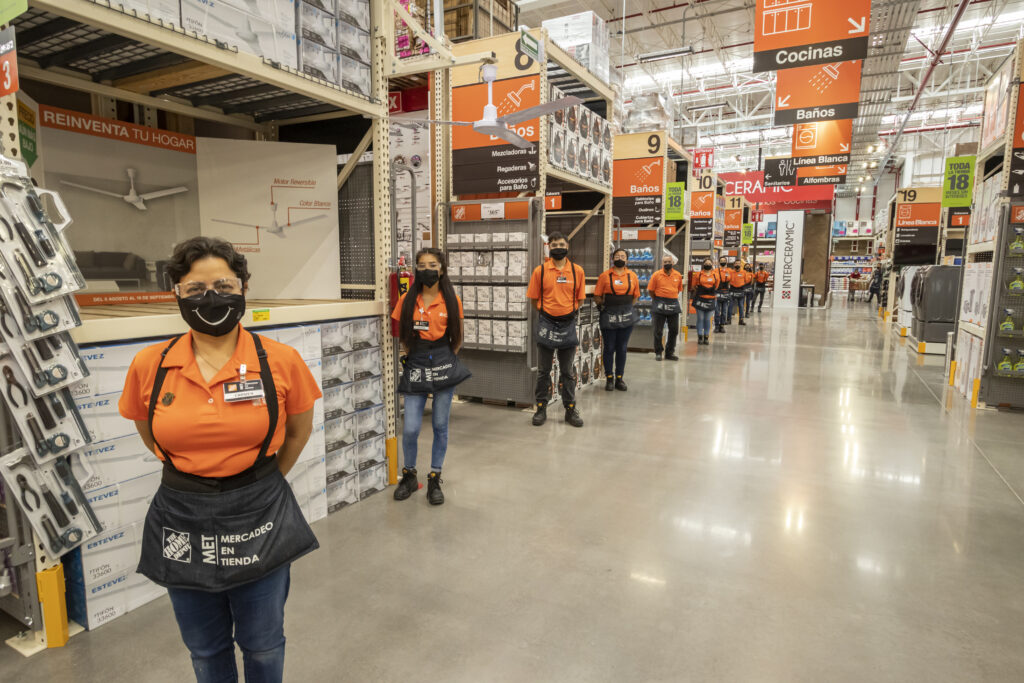Home Depot District Manager Directory Phone Number

The accessibility, or rather the elusiveness, of contact information for Home Depot's district managers has become a simmering point of frustration for contractors, suppliers, and even some employees. Navigating the corporate structure to address pressing issues, resolve disputes, or propose collaborations often feels like an exercise in futility, leaving many feeling unheard and undervalued. This lack of transparency can have real-world consequences, impacting project timelines, business relationships, and ultimately, the bottom line.
At the heart of the matter lies the difficulty in obtaining a direct line of communication with those overseeing store operations at the district level. While Home Depot offers various customer service channels and online resources, these often prove inadequate when dealing with matters requiring a more nuanced understanding of local dynamics or specific store policies. The absence of a readily available Home Depot District Manager Directory Phone Number, or equivalent contact method, forces individuals to navigate a labyrinthine corporate structure, leading to delays, miscommunication, and ultimately, dissatisfaction.
The Challenge of Reaching District Management
Home Depot, like many large corporations, operates with a hierarchical structure. Individual stores report to district managers, who in turn report to regional and corporate leadership. This structure, while efficient for internal operations, can present a significant barrier to those outside the company seeking to engage with district-level decision-makers.
The standard customer service channels are generally equipped to handle routine inquiries and complaints. However, they often lack the authority or expertise to address complex issues requiring district-level intervention. This disconnect can be particularly problematic for contractors dealing with large-scale projects, suppliers seeking to resolve logistical challenges, or even employees attempting to escalate internal concerns.
Why is Contact Information So Difficult to Obtain?
Several factors likely contribute to the limited accessibility of district manager contact information. One primary concern is undoubtedly the sheer volume of inquiries that district managers would face if their contact details were publicly available. This could overwhelm their capacity to manage daily operations and strategic initiatives.
Another consideration is the potential for misuse or harassment. Providing direct contact information could expose district managers to unwanted solicitations, frivolous complaints, or even inappropriate behavior. The company likely seeks to protect its employees from such disruptions.
Finally, Home Depot may prefer to maintain a centralized communication system to ensure consistent messaging and control over information dissemination. Direct communication with district managers could circumvent these established protocols, potentially leading to inconsistencies or misinterpretations.
Impact on Contractors and Suppliers
For contractors and suppliers, the inability to easily contact district managers can have significant repercussions. Delays in project approvals, difficulties in resolving payment disputes, and challenges in coordinating deliveries can all stem from a lack of direct communication. This can lead to increased costs, missed deadlines, and strained business relationships.
Consider a scenario where a contractor needs to urgently address a discrepancy in a large order of materials for a major construction project. Reaching the appropriate district manager to expedite the resolution is crucial to avoid costly delays. Without a direct line of communication, the contractor may be forced to navigate a frustrating and time-consuming process, potentially jeopardizing the entire project timeline.
Suppliers, too, face similar challenges. Resolving logistical issues, negotiating pricing agreements, or introducing new product lines often requires direct engagement with district-level decision-makers. The absence of readily available contact information can hinder these efforts, potentially impacting sales and market share.
"It's like shouting into the void," one contractor lamented, speaking on the condition of anonymity. "You submit your request through the online portal, and then you just wait. And wait. Sometimes you hear back, sometimes you don't. It's incredibly frustrating when you have a time-sensitive issue that needs immediate attention."
Employee Perspectives
The challenge of contacting district managers isn't limited to external stakeholders. Even Home Depot employees sometimes struggle to escalate internal concerns or seek clarification on company policies. This can create a sense of disconnect and hinder effective communication within the organization.
While internal communication channels exist, they may not always be sufficient to address complex or sensitive issues. Employees may feel hesitant to raise concerns through formal channels, fearing potential repercussions. Direct access to district management could provide a more confidential and responsive avenue for addressing these issues.
A former Home Depot employee, also speaking anonymously, stated, "There were times when I really needed to speak with my district manager about a serious issue. But it felt like there were so many layers to go through. It just felt easier to let it go, which isn't always the best thing for the company or the employees."
Potential Solutions and the Path Forward
While completely open access to district manager contact information may not be feasible, there are potential solutions that could improve communication and transparency. One option is to create a dedicated portal or online form for contractors and suppliers to submit inquiries directly to the appropriate district management team.
This portal could include a system for tracking inquiries and ensuring timely responses. It could also provide a mechanism for prioritizing urgent issues, ensuring that critical matters receive prompt attention.
Another approach is to empower store managers to act as liaisons between external stakeholders and district management. Store managers are often the most familiar with local issues and can effectively filter inquiries and facilitate communication.
Ultimately, finding a balance between accessibility and protecting district managers from being overwhelmed is key. By exploring alternative communication channels and streamlining the inquiry process, Home Depot can improve its responsiveness to contractors, suppliers, and employees, fostering stronger relationships and a more collaborative environment. The future likely involves a more nuanced approach to information sharing, leveraging technology to bridge communication gaps while safeguarding the privacy and efficiency of its leadership teams.













![Home Depot District Manager Directory Phone Number 집수리의 모든 것 [ The Home Depot ] : 네이버 블로그](https://cdn.britannica.com/99/255799-050-7CE3CB21/The-Home-Depot-Store-Employee-working.jpg)




